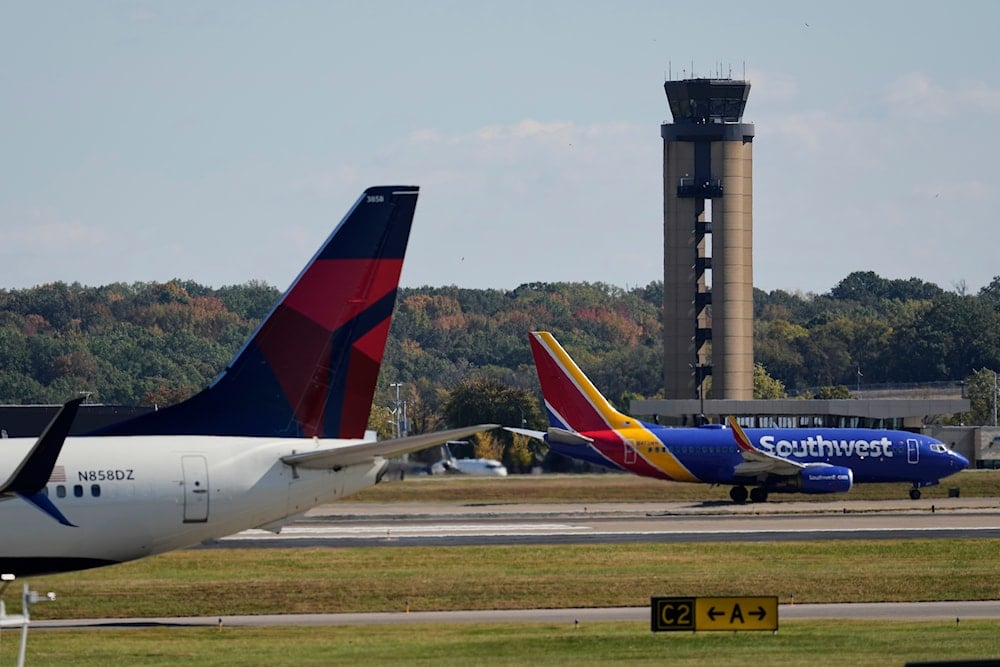US government shutdown forces 10% flight cut at 40 major airports
As the US government shutdown enters day 36, the FAA orders 10% flight cuts at key airports over air traffic safety concerns, straining airline operations.
-

Planes taxi past the control tower before takeoff at the Nashville International Airport, Friday, Oct. 31, 2025, in Nashville, Tenn. (AP Photo/George Walker IV)
As the US government shutdown entered its 36th day, Transportation Secretary Sean Duffy announced a mandatory 10% reduction in flights at 40 major airports nationwide, citing urgent air traffic control safety concerns. The decision comes amid mounting staffing shortages that placed growing pressure on an already strained aviation system.
The announcement sent major US airlines into crisis mode, scrambling to restructure operations within 36 hours. As passengers flooded customer service hotlines, Duffy stated the flight cuts could be reversed if Democrats agreed to reopen the government. "This is about safety and responsibility," Duffy told reporters, pointing to a confidential safety assessment that raised red flags about controller performance under the ongoing shutdown.
The shutdown, now the longest in US history, has left 13,000 air traffic controllers and 50,000 TSA agents working without pay. Analysts say the move could disrupt as many as 1,800 flights, affecting over 268,000 airline seats, particularly in busy hubs like New York City, Washington, D.C., Chicago, Atlanta, Los Angeles, and Dallas.
Air traffic control safety at risk, says FAA
The Federal Aviation Administration (FAA) revealed that the phased reductions would begin at 4%, increasing incrementally to 10% by next week. International flights will be exempt from the cuts, according to FAA officials.
"When we see pressures building in these 40 markets, we just can't ignore it," FAA Administrator Bryan Bedford said. "We can take action today to prevent things from deteriorating so the system is extremely safe today, will be extremely safe tomorrow."
The FAA, already short by 3,500 air traffic controllers, has been relying on mandatory overtime and extended workweeks to maintain operations. Officials say the agency could implement additional flight restrictions if staff shortages worsen, and airlines are evaluating the impact of the FAA flight reductions on their networks.
United Airlines CEO Scott Kirby assured that long-haul international and hub-to-hub operations would remain unaffected. The carrier will target regional flying and non-hub domestic routes for reductions. Kirby also announced a flexible refund policy for affected customers.
American Airlines expressed similar sentiments, noting minimal disruption for most travelers. Southwest Airlines, the largest domestic carrier, is still reviewing how its schedule will be impacted and is urging lawmakers to end the impasse.
Long-term impact of shutdown on Aviation Sector
The government shutdown's impact is being closely watched by the industry. Despite currently manageable business conditions, carriers warn that flight bookings could drop sharply if the shutdown persists. More than 2,100 flights were delayed on Wednesday alone, and absenteeism among air traffic controllers has surged, with up to 40% failing to report to work at some of the nation’s busiest airports.
Duffy warned that if the government shutdown continues into the next week, the agency may be forced to close parts of the national airspace and impose time-based restrictions on space launches and general aviation flights.
The shutdown, which began on October 1, has already affected millions, shuttering services, delaying assistance programs, and putting over 750,000 federal employees on furlough. Lawmakers remain deadlocked over key provisions related to health insurance subsidies, with no resolution in sight.

 3 Min Read
3 Min Read








